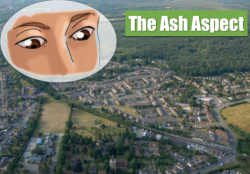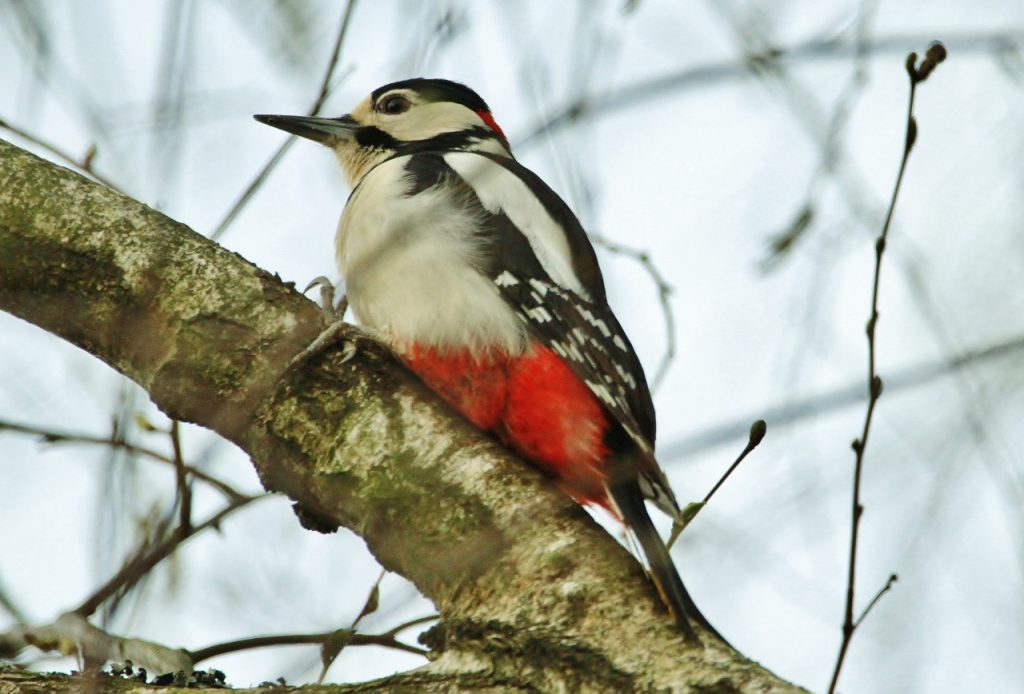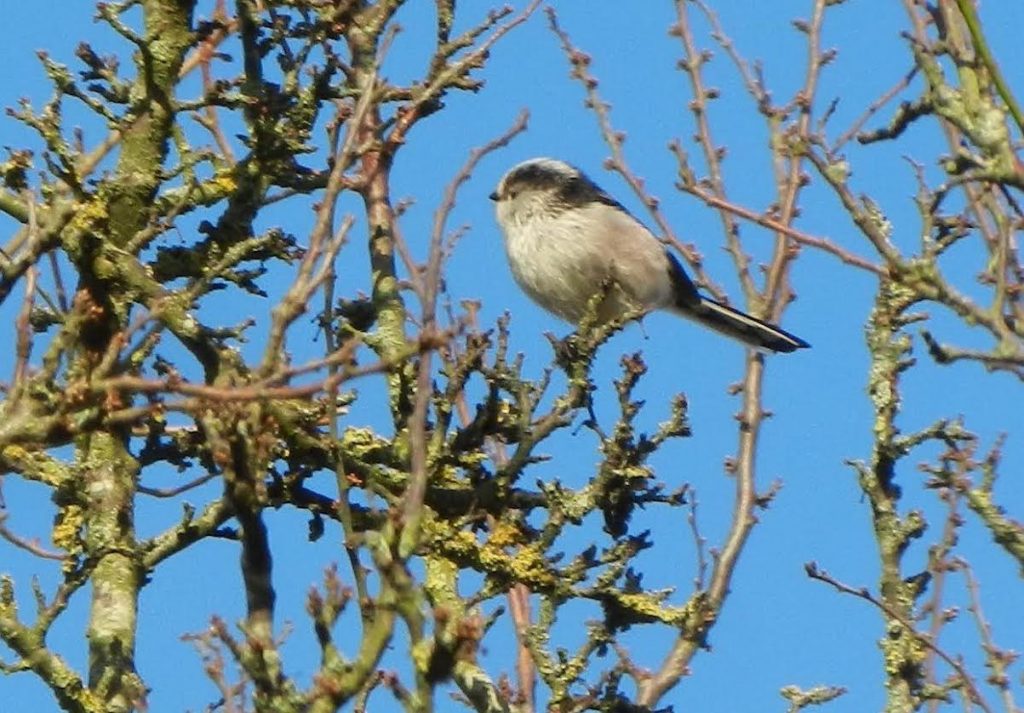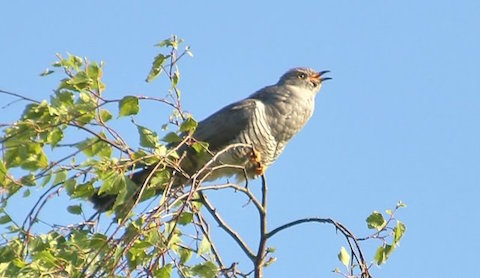 Abraham Lincoln
If given the truth, the people can be depended upon to meet any national crisis...
Abraham Lincoln
If given the truth, the people can be depended upon to meet any national crisis...
 Guildford news...
for Guildford people, brought to you by Guildford reporters - Guildford's own news service
Guildford news...
for Guildford people, brought to you by Guildford reporters - Guildford's own news service
The Ash Aspect: Temporary Reprieve For Nesting Birds
Published on: 3 Apr, 2017
Updated on: 4 Apr, 2017
The elderly woman walking her Labrador across the fields known as Ash Lodge Meadows was keen to stop and talk to me about her worries.
“We now have to accept the fact that a horrendous housing estate is going to be built on this land,” she said. “But what really concerns me is that we are approaching the bird nesting season. If they start clearing the land now, it will be a disaster for local wildlife.”
She had a fair point. I walk these fields every day and see a rich variety of birds. For a start there are the common, all-year-round species like kestrels, wood pigeons, green woodpeckers, great tits, wrens, goldcrests, long tailed tits, jays, magpies and buzzards.
A recent addition to our local birdlife is the red kite. Another popular resident is the great spotted woodpecker, which makes its presence known in the springtime by performing its distinctive “drum roll” on the bark of a tree.
Two years ago I watched a pair of them going to and from their nest feeding their babies. They’d set up home in the hole of a tree near in woodland near the disused railway line that once ran into Farnham.
Any time now we will start seeing the summer visitors – among them the whitethroat, blackcap, and willow warbler. Occasionally the cuckoo pays Ash a visit – although this is becoming rarer.
So what will happen if the land clearance begins this spring or summer, in preparation for the house building which is now inevitable? According to the local grapevine, this work is imminent.
Fortunately the word on the local grapevine is wrong, as a quick enquiry to Guildford Borough Council revealed. The conditions attached to the planning permission for the proposed estate required the submission of what is known as a biodiversity mitigation and enhancement plan.
This sets out measures to protect wildlife, such as seeking to avoid site clearance during the nesting season. The council tells me it will ensure that the mitigation measures are adhered to. In any case, nesting birds are also protected in their own right by law and disturbance may be an offence under the Wildlife and Countryside Act 1981, amended by the Countryside and Rights of Way Act 2000.
According to the RSPCA, the basic principle of this Act is straightforward: all wild birds, their nests, and eggs are protected by law and some rare species are afforded additional protection from disturbance during the breeding season. Nests cannot be moved or destroyed by anyone while they are being built or are still in use.
So the next time I saw my friend with the Labrador I was able to reassure her – but only partially. All of us know this is only a stay of execution.
Responses to The Ash Aspect: Temporary Reprieve For Nesting Birds
Leave a Comment Cancel replyPlease see our comments policy. All comments are moderated and may take time to appear.
Recent Articles
- Guildford Institute’s Crowdfunding Project for Accessible Toilet in its New Community and Wellbeing Centre
- Letter: Guildford – Another Opportunity Missed?
- Letter: GBC’s Corporate Strategy – Where Is the Ambition?
- My Memories of John Mayall at a Ground-breaking Gig in Guildford Nearly Six Decades Ago
- Westborough HMO Plans ‘Losing the Heart of the Street’ Says Resident
- College Invests to Boost Surrey’s Economy and Close Digital Skills Gap
- Community Lottery Brings Big Wins for Local Charities
- GBC Housing Plan Promises ‘A Vibrant Urban Neighbourhood’ Near Town Centre
- Hospital Pillows ‘Shortage’ at the Royal Surrey
- Updated: Caravans Set Up Camp at Ash Manor School


Recent Comments
- Ian Macpherson on Updated: Main Guildford to Godalming Road Closed Until August 1
- Sara Tokunaga on GBC Housing Plan Promises ‘A Vibrant Urban Neighbourhood’ Near Town Centre
- Michael Courtnage on Daily Mail Online Reports Guildford Has Highest-paid Council Officer
- Alan Judge on GBC Housing Plan Promises ‘A Vibrant Urban Neighbourhood’ Near Town Centre
- John Perkins on GBC Housing Plan Promises ‘A Vibrant Urban Neighbourhood’ Near Town Centre
- S Collins on GBC Housing Plan Promises ‘A Vibrant Urban Neighbourhood’ Near Town Centre
Search in Site
Media Gallery
Dragon Interview: Local Artist Leaves Her Mark At One of England’s Most Historic Buildings
January 21, 2023 / No Comment / Read MoreDragon Interview: Lib Dem Planning Chair: ‘Current Policy Doesn’t Work for Local People’
January 19, 2023 / No Comment / Read MoreA3 Tunnel in Guildford ‘Necessary’ for New Homes, Says Guildford’s MP
January 10, 2023 / No Comment / Read More‘Madness’ for London Road Scheme to Go Ahead Against ‘Huge Opposition’, Says SCC Leader
January 6, 2023 / No Comment / Read MoreCouncillor’s Son Starts Campaign for More Consultation on North Street Plan
December 30, 2022 / No Comment / Read MoreCounty Council Climbs Down Over London Road Works – Further ‘Engagement’ Period Announced
December 14, 2022 / No Comment / Read MoreDragon Interview: GBC Reaction to the Government’s Expected Decision to Relax Housing Targets
December 7, 2022 / No Comment / Read MoreHow Can Our Town Centre Businesses Recover? Watch the Shop Front Debate
May 18, 2020 / No Comment / Read More














Jim Allen
April 3, 2017 at 10:04 am
Sadly as the stag beetle lives under ground for three to seven years, no ‘mitigation’ will save them. The robin who returns to the same location over the years will also have to find a new home.
No amount of “mitigation” will save our countryside when building houses. And, due to the secrecy of GBC SHMA, I have no certainty that these house are actually needed in the first place.
If they are needed (not just wanted!) then GBC should put into the public domain numbers that actually add up. I challenge them to display the calculations and corrected number (recalculated since June 2016) to actually prove their case.